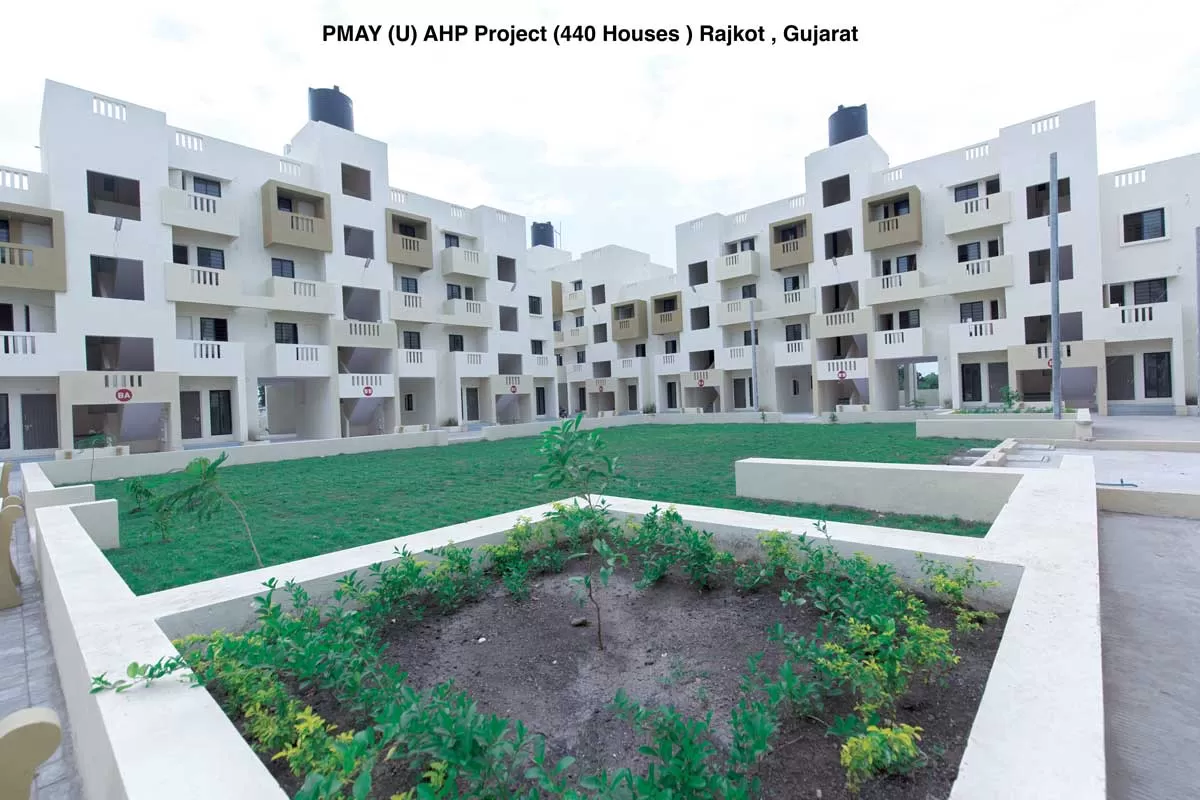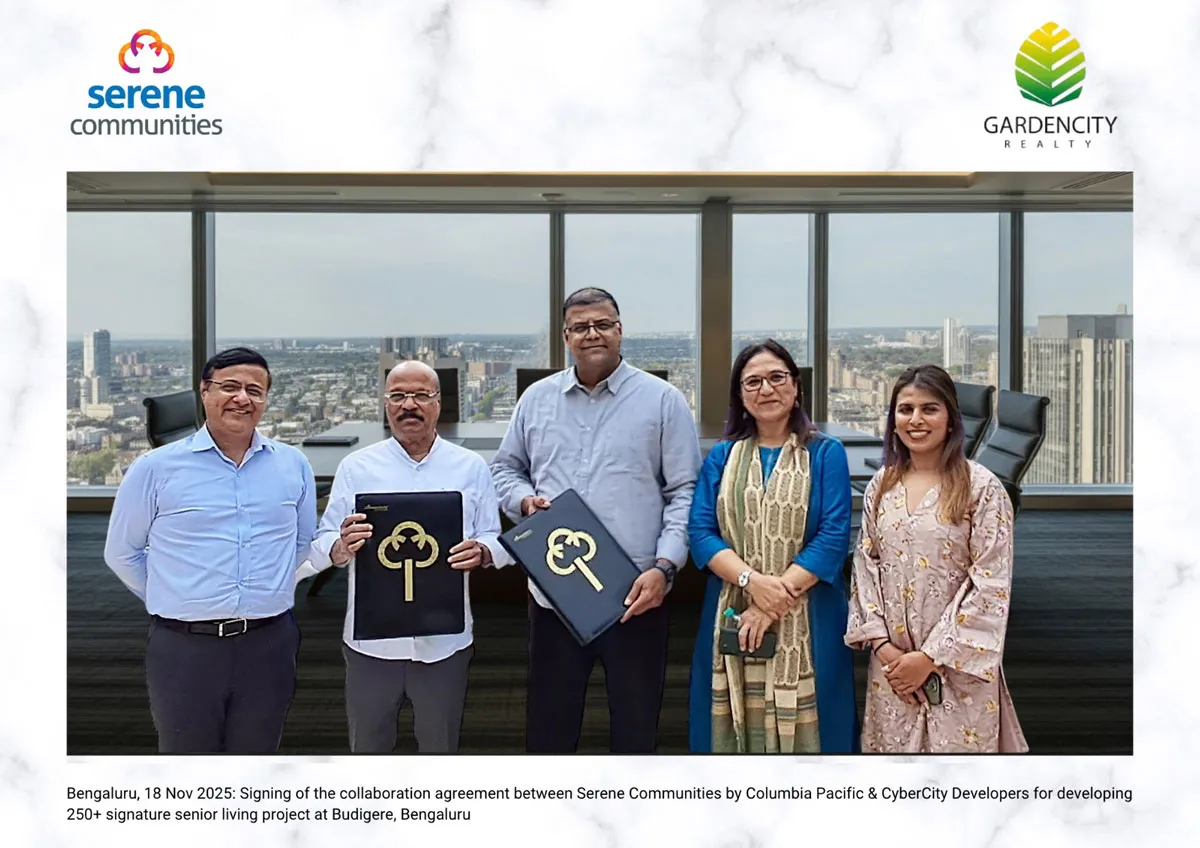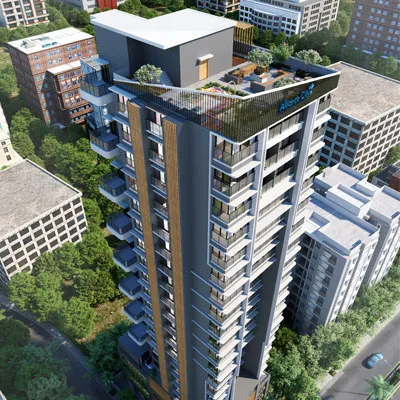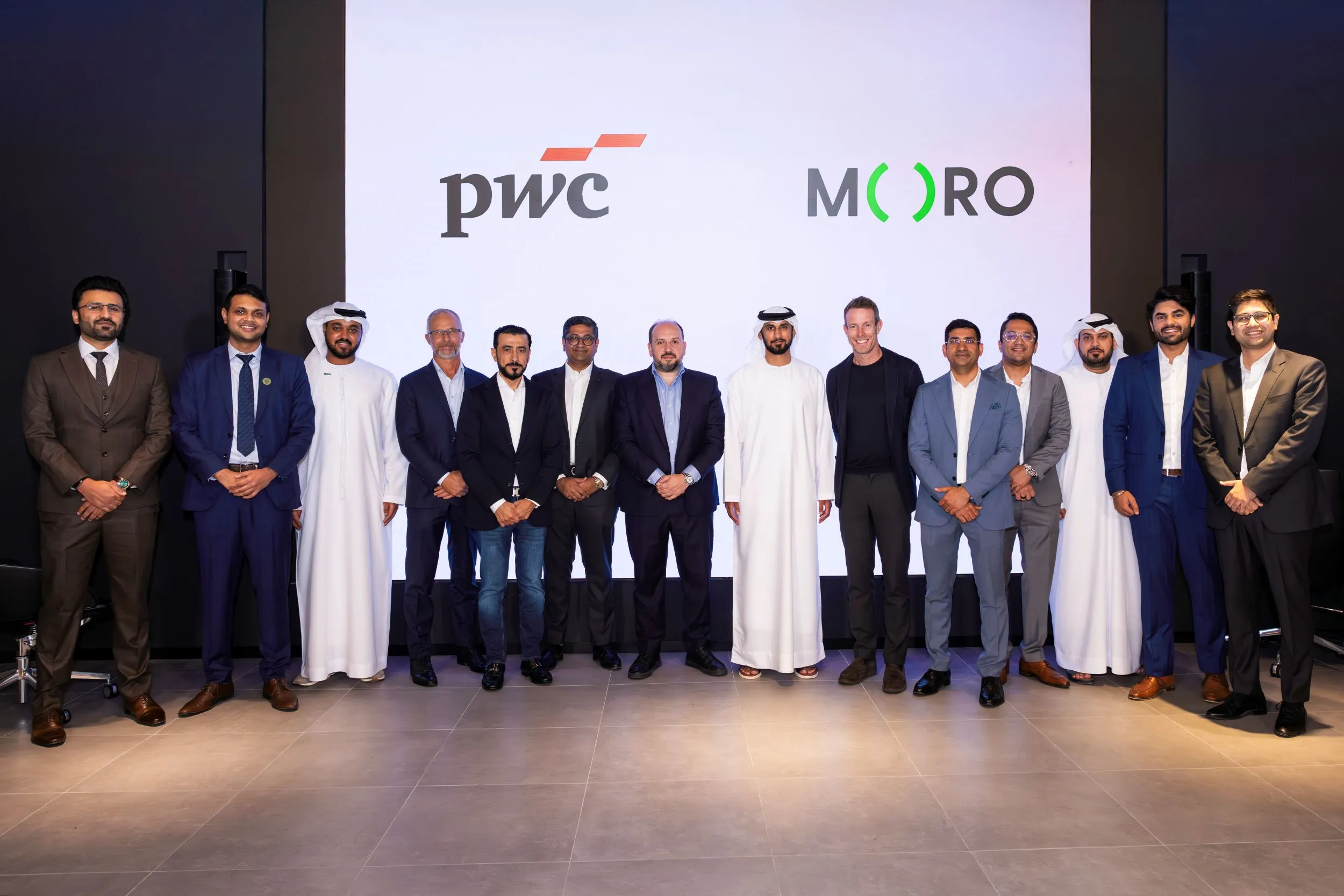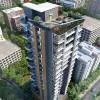In July 2024, the Supreme Court directed the Bombay High Court to initiate suo motu proceedings to evaluate the implementation of the Maharashtra Slum Area (Improvement, Clearance and Redevelopment) Act.
During the ensuing proceedings, the Division Bench of Justices expressed concern about the plight of slum dwellers, saying, “Merely because you are a slum dweller doesn’t mean that you are left to the discretion of developers. They end up with a pittance.” The Bench also noted that the buildings allocated to slum dwellers were akin to “vertical slums”. “The buildings are congested. There is no sunlight, no ventilation. This will cause health problems. There is no space between two buildings. They [slum dwellers] were better off on [the] ground encroaching. In our opinion, it will be a serious issue against Article 21 of the Constitution.”
These observations are especially pertinent in the light of the Mumbai Metropolitan Region (MMR) seeing the tallest ever slum redevelopment projects being implemented under the Slum Rehabilitation Authority (SRA), such as Piramal Mahalaxmi’s 42-storey tall rehab building adjacent to a 65-storey luxury development.
News reports in recent years suggest that in some instances slum dwellers have sold or rented out their new apartments and returned to their previous housing owing to poor quality of the buildings and unaffordable maintenance costs.
In this article, CW delves into the SRA’s implementation methodology for slum rehabilitation buildings to ascertain if and why the developments cited by the High Court fell short and asks the industry to opine on the present state of affairs.
Money matters
Most redevelopments suffer from poor design, increased cost of civic amenities and low quality of life within the high-rises, says Ajay Sharma, Managing Director, Valuation Services, Colliers India, and have, therefore, “become a point of contention”.
Prashant Sutaria, Founder, Prashant Sutaria Architects, attributes the existing state of affairs to the fact that slum rehabilitation is being funded through real-estate development, in keeping with the policy of the SRA.
Essentially, developers who are entrusted with slum redevelopment projects on a parcel of land earn by developing and selling additional real estate on that plot.
According to Sutaria, “Developers try to contain the costs of construction and maintenance by limiting the height of such buildings to 70 m (about 22 floors). This fact and marketing necessities like the need to distance ‘for sale’ real estate from the rehab building result in very tight floor plates and very close rehab buildings.”
Nitin Killawala, Architect, Group Seven Architects and Planners, has another view. “Land for slum housing is marketable with a value varying as per the ready reckoner rates when the value should be zero, similar to land for any government infrastructure (hospitals/ schools/police stations/metro yards/etc),” he says. “Because of this value, slum dwellings can sometimes be priced even higher than the construction cost of a 1BHK home. And projects on valuable slum land become a partnership with private builders for their profiteering, a ploy to release large tracts of government lands for Mumbai’s real estate industry.”
Interestingly, many SRA projects that are currently being implemented by big brands were stalled or delayed projects that have been given new life under very lucrative floor space index (FSI) incentives, including fungible FSI.
“To balance the economic returns expected and the quality of life of project-affected persons, local bodies have provided higher incentives to developers for the sale portion of the project like higher FSI, lowering of approval costs and balancing condition precedents for the sale of free FSI,” explains Sharma. “Simultaneously, local bodies formulate stringent design specifications to make life better in the high-rise, including densification and rehabilitation of tower heights but these must be implemented so that vertical slums are not created.”
If vertical slums are being created despite these safeguards, what is the solution?
Role of PMAY
In-situ slum redevelopment projects, the main sort of projects being undertaken by the SRA, are one kind of affordable housing mandated under the Pradhan Mantri Awas Yojana-U (PMAY-U), India’s national scheme aiming at ensuring affordable all-weather houses in urban areas. PMAY-U has three other verticals covering slum-dwellers: affordable housing in partnership with the private or public sector, beneficiary-led individual house construction or enhancement, and credit-linked subsidy schemes. But these haven’t been particularly successful.
Pratima Joshi, Founder and Executive Director, Shelter Associates, says, “Challenges in implementing these schemes in Maharashtra [where Joshi is based] have kept them out of the ambit of permanent housing. Of 12 million PMAY-U beneficiary households across India, only 1.8 million are from slums, which translates to only 12 per cent of the slum households as per the 2011 Census.”
Joshi points out that housing stocks created under the affordable housing vertical of the PMAY-U are often beyond the means of slum households. Further, the fact that slum dwellers don’t own the land they live on hinders their access to the beneficiary-led construction programme of the PMAY-U, which provides Rs 2.5 lakh finance to construct new houses to eligible families belonging to the economically weaker section (EWS) category. Slum dwellers additionally find it challenging to navigate the bureaucracy and ambiguous guidelines associated with such schemes.
But there are ways out. Bondre Nagar, Kolhapur, is home to Maharashtra’s only slum redevelopment project on government land under the beneficiary-led construction vertical of PMAY-U.
Slum-led construction
In Bondre Nagar, Kolhapur’s 77 slum households formed a cooperative housing society and the land was transferred as individual plots to every family, ensuring legal property ownership rights for the residents, shares Joshi. “The alternative would have been to give the land to the cooperative housing society on lease.” Thereafter, the slum dwellers appointed a contractor.
All this became possible because Shelter Associates played a role. “We liaised with the government bodies and the community, helped the slum occupants form a cooperative housing society, helped the urban local body prepare a detailed project report, coordinated with different departments for the transfer of land from the revenue department to the beneficiary families, and provided the community with technical assistance to design the project, and work out the project cost, choose a contractor, and monitor the execution on a daily basis,” shares Joshi.
However, Shelter Associates raised its own funding support for this project, which is why she points out that the housing policy should acknowledge this gap and provide financial support to NGOs or consultants who are hired to facilitate such projects.
The SRA’s stand
All proposed architectural plans/drawings are checked before granting approvals, affirms Dr Mahendra Kalyankar, Chief Executive Officer, Slum Rehabilitation Authority (SRA). Further, “on completion of the plinth, engineers of the SRA check the marginal distances and other dimensions.”
He says developers and architects have been instructed to provide properly ventilated passages up to 2-m wide leading to the rehab units, which are of adequate size. And also, to provide marginal open spaces surrounding the building so that the habitable rooms get sufficient light and ventilation, and to provide the minimum travel distance between the staircase and the dead wall. “Clause 6.11 of Regulation 33(10) mandates at least 8 per cent open space at the ground level for slum plots, for better airflow and light distribution in dense urban areas.”
According to Dr Kalyankar, the SRA also has a future agenda to improve the quality of construction of the building. “We plan to form a quality control cell,” he says. “We also propose to develop an app to monitor the progress of work. We propose to make it compulsory for architects, project management consultants and third-party quality agencies to periodically submit progress reports and quality control reports to the SRA.”
Other targets are promoting the use of advanced construction technologies, such as modular construction or prefabrication, to ensure precision and quality; insisting that developers service 10-year maintenance contracts for high-rise rehab building elements such as lifts, mechanical and electrical equipment; and waterproofing terraces and bathrooms, he adds. “We are also pushing for SRA buildings to be green buildings, replete with rainwater harvesting systems, wastewater recycling systems and sufficient plantations.”
Vertical failures
Coming back to the observation of the Bombay High Court about vertical slums, one of the deficiencies of slum rehabilitation projects is their failure to address the problem holistically.
“Bondre Nagar, Kolhapur’s original PMAY proposal, involved rehabilitating the slum in G+7 buildings and having a saleable component in G+12 buildings, but the community rejected this plan,” says Joshi. “Community engagement shows that slum dwellers aren’t comfortable in high-rise buildings. They prefer low to mid-rise developments, not tall structures, and in those, larger apartments from 35 sq m onwards. Slum dwellers value open courtyards and backyards as much of their living happens outdoors.”
She says her team also rejected the Bondre Nagar mid-rise solution “because the slum was on the edge of the city, an area that would not have attracted buyers”. Eventually, each slum household got a G+1 tenement (see box for more details). In Sangli-Miraj and Pune, however, Joshi has worked on G+3 and G+1 buildings.
Viable alternatives
“Our experience in slum redevelopment has been mixed,” says Bharati Bhonsale, Programme Manager, Housing, Water and Sanitation, Mahila Housing Trust. “Very congested slums, low-lying slums or slums where the land is disputed are better suited to being redeveloped with buildings that are between four and seven storeys tall.”
However, she continues, “There are certain slums where it makes more sense to develop in-situ infrastructure like street roads, lighting and other amenities and assist the occupants to legalise their possession of land and repair or construct their homes with assistance from government schemes or through their own savings. In such slums, the intervention focuses on converting a slum into a legal society.”
Incremental housing is a viable alternative approach to high-rise rehabilitation, wherein existing settlements are gradually upgraded with infrastructure and services while maintaining the community fabric, explains Anuj Puri, Chairman, ANAROCK Group.
He cites the Yerawada pilot project in Pune as a successful demonstration of the feasibility of this model, where more than 1,200 families were rehabilitated while preserving their economic networks and social bonds.
“Another model gaining traction is the land pooling approach, where slum dwellers become stakeholders in the development process, receiving smaller but formal housing units while remaining within their original location,” says Puri.
Singapore: A global example of ideal public housing
“For more than two decades, we have seen twists and turns of the housing policy and substantial increases in slums, not the other way round,” says Nitin Killawala, Architect, Group Seven Architects and Planners. “This would be unacceptable to any sane government in any part of the world.”
In his view, there are no good examples in India of slum rehabilitation projects. On the contrary, he says, “The Pradhan Mantri Awas Yojana policy benefits private entities in the name of the poor.”
In contrast, he points out, “The Singapore Housing & Development Board (HDB) has done stupendous work in mass housing for ordinary citizens.”
Singapore’s HDB was established in 1960 to respond to the city-state’s housing crisis. At the time, less than 10 per cent of Singaporeans lived in government flats, and many lived in unhygienic, crowded slums. Within a decade, the HDB had built enough flats to solve Singapore’s housing crisis. Its success strategy included putting a sole agency in charge of public housing for effective, large-scale construction and adopting a total approach covering planning and design, land assembly, and construction, with strong government support in the form of political and financial commitment, complemented by legislation.
The HDB’s over 1 million flats now house more than 80 per cent of Singapore’s population, across 24 towns and three estates. These flats have varied in design, from being basic and functional in the 1960s to planned comprehensive towns in the ’70s, being based on the precinct concept with a wide variety of recreational facilities for residents in the ’80s, developing distinctive identities for towns in the ’90s, developing innovative, modern and green homes in the 2000s, and creating well-designed, sustainable, smart homes and Singapore’s first smart township in the 2010s.
Killawala wants India to emulate Singapore’s HDB success not just in better design and execution but in the Government’s commitment and integrity to provide dignified homes. For this to happen, he says, “The Government should realise that shelter is a fundamental right according to the Constitution and, therefore, it is the Government’s responsibility to provide shelter to every citizen of the country.”
Eventually, “it’s a win-win deal,” he reasons, “because a legitimate house also generates revenue for government and service providers.”
Prioritising maintenance
Where slum dwellers accept the idea of relocating to apartments, the number of storeys must be limited because “slum occupants cannot maintain the common areas in anything taller than four to seven storeys,” says Bhonsale.
Mukesh Mehta, Chairman, M M Project Consultants, believes the concept of developing tall buildings with small units for slum dwellers is destined to produce vertical slums, as slum dwellers can’t afford the management and upkeep of tall buildings.
Contracts covering tall building projects to rehabilitate slum dwellers could potentially be reworked to cover this maintenance gap.
“As slum dwellers find it hard to maintain the buildings that they are allotted units in, for all the projects I am involved with, including Dharavi, the Kopri Redevelopment in Thane and several others, we are providing for a 10-15 year guarantee on the external paint, waterproofing, electrical, plumbing, lifts, etc,” says Mehta.
For Bhonsale, however, the onus lies on the municipal corporation or authority, which “must have an ongoing engagement with the occupants of slum rehabilitation buildings for the sake of maintenance”. “It isn’t enough to create a building and move away,” she says. “Slum dwellers need to be incentivised to maintain their new dwelling. We frequently see that slum dwellers find it hard to bear the electrical expenses associated with water supply. It helps to introduce solar energy for such functions.”
Developer speak
The better the quality of construction, the less the need for maintenance, and the less likely that the rehab building will become a vertical slum. In that context, it is vital for the developer to choose an architect with experience in handling complexities such as space restrictions and tight planning, construction methods and materials.
“For all our projects, including the Triumph, Ramdev, and Yura slum rehabilitation projects, we prioritise collaborating with accomplished architects to create thoughtful and sustainable developments,” says Shraddha Kedia-Agarwal, Director, Transcon Developers. “Our architects focus on enhancing the living experience, with careful consideration of natural light, ventilation, open spaces, setbacks and community areas. Improving quality of life is a key goal, whether for rehabilitated tenants or sale occupants. We also ensure strict adherence to local regulations and approval processes, creating environments that are both compliant and enriching for residents.”
In the Nehru Nagar SRA project in Kanjurmarg East, Mumbai, Sutaria ensured that each of the 200 units spread over 22 floors had a separate kitchen, bedroom, living room and bathroom. “Providing adequate natural light and ventilation in a slum rehab unit is vital,” he says. “It also helps to give the families a little more than they expected. We made sure that the ground floor had enough parking and open area. Each floor lobby is wide and provides space for social interaction. The common amenities are made well. Three lifts, two staircases and the quality of construction made the building more liveable, almost like a sale building.”
In designing units in the rehab projects Nishchay in Dahisar, 34 Park Estate in Goregaon and Cornerstone in Worli, the Chandak Group incorporated full-height windows, with grills for safety, to maximise natural light and ventilation. Additionally, the units were strategically planned to ensure sufficient open space.
Coming to construction methods, the Chandak Group adopted the aluminium formwork construction system for slum rehabilitation projects, a method also used in high-end residential developments, for ensuring robust structural stability and enhanced safety, particularly in terms of earthquake resistance. Finishing materials come from reputed brands that adhere to established industry codes for electrical systems, plumbing, paints, lifts, etc. and the quality and specifications match the rigorous standards typically applied to open-market residential projects.
Kedia-Agarwal affirms maintaining high standards across both rehabilitation and sale buildings, incorporating quality materials such as premium concrete and steel for durability, advanced construction techniques like aluminium formwork for precision and efficiency, and finishing materials sourced from top manufacturers to ensure consistent quality. “In rehabilitation buildings, we focus on materials that are low-maintenance, serviceable and easily accessible, such as durable texture paint, prefabricated doors and aluminium composite panels, to ensure convenience in long-term upkeep.”
Cofinancing options
If the product (the rehabilitation slum unit) is of high quality, tenants may be willing to either pay rent or instalments to recover all or some of the cost, observes Sutaria. Then, the dwelling would not have to be offered for free.
A case in point: Shelter Associates’ Bondre Nagar Kolhapur project, where slum dwellers contributed Rs.6 lakh per unit, or Rs.4.62 crore for 77 houses, says Joshi. “Of this, the beneficiary contribution was about 53 per cent, 41 per cent was covered by PMAY and around 6 per cent was met from CSR contributions. For the record, Rs.5.25 lakh was for the RCC works, external walls, plastering and painting, tiling, kitchen platform, functional toilet, doors and windows, while Rs.75,000 was for the internal walls, painting and staircase.”
She believes that explaining the financials of a project to slum dwellers is a vital part of execution, and so is explaining the value of savings and encouraging them to take long-term actions to improve their creditworthiness, such as opening bank accounts.
Workable solutions
Creating larger layouts by grouping the redevelopment of multiple slums could help work around some of the slum redevelopment challenges, according to Sutaria. In Mumbai, for instance, this would entail creating a master plan for large slum pockets like Vikhroli to Bhandup on the foothills, to be taken up in smaller parts as per the present policy. Sufficient planning based on a dialogue between architects, planners and policymakers could further mitigate these issues.
Bhonsale affirms, “It’s always easier and faster to split a slum into sectors and redevelop it piecemeal. Redeveloping very large slums of, say, upwards of 1,000 units is challenging, especially getting consensus from the entire slum.”
For the rehabilitation of larger slums such as Dharavi, which spans 600 acres, Mehta proposes the creation of townships replete with housing for the slum dwellers on the side that is best connected to mass urban transportation systems, and housing for the open market (sale), schools and healthcare facilities on the rest of the land parcel. “Social infrastructure such as schools and health centres must be shared by the residents of the townships, a process that may be kickstarted by allocating days and times for each and later merging these as and when the communities integrate,” he says. “Slum rehabilitation must have a broader vision of integration and reducing inequities to be successful, and involve the entire community as a stakeholder.”
“Abolishing multiple agencies like the SRA and the Maharashtra Housing and Area Development Authority (MHADA) in favour of a single housing authority constituted with active participation by professionals would be a step forward,” says Killawala. “Central government programmes such as PMAY should be tagged infrastructure projects, social housing construction projects, and earmarked government lands should never be monetised.”
Designating slum redevelopment projects ‘infrastructure projects’ could help them get better funding, possibly even subsidies in the form of rebates on GST, etc, agrees Sutaria, emphasising, “It’s high time the needs of this class that is the backbone of our economy be prioritised.”
1) Capacit'e Infraprojects Ltd., a leading name in construction and infrastructure, in a Special Purpose Vehicle (SPV) with Tata Projects, is spearheading the ambitious redevelopment of the iconic Bombay Development Department (BDD) Chawls in Worli, Mumbai. Click here to read more
2) Oberoi Realty has been appointed as the developer for a slum rehabilitation scheme on a 10,300-square-meter plot at Bandra Reclamation, Mumbai.
